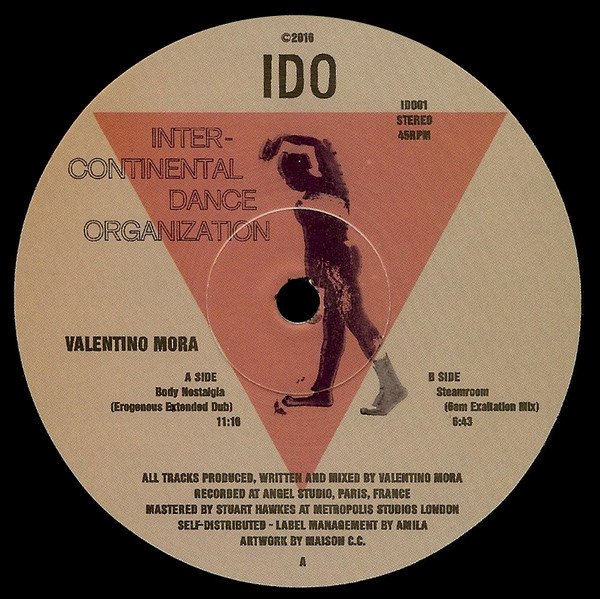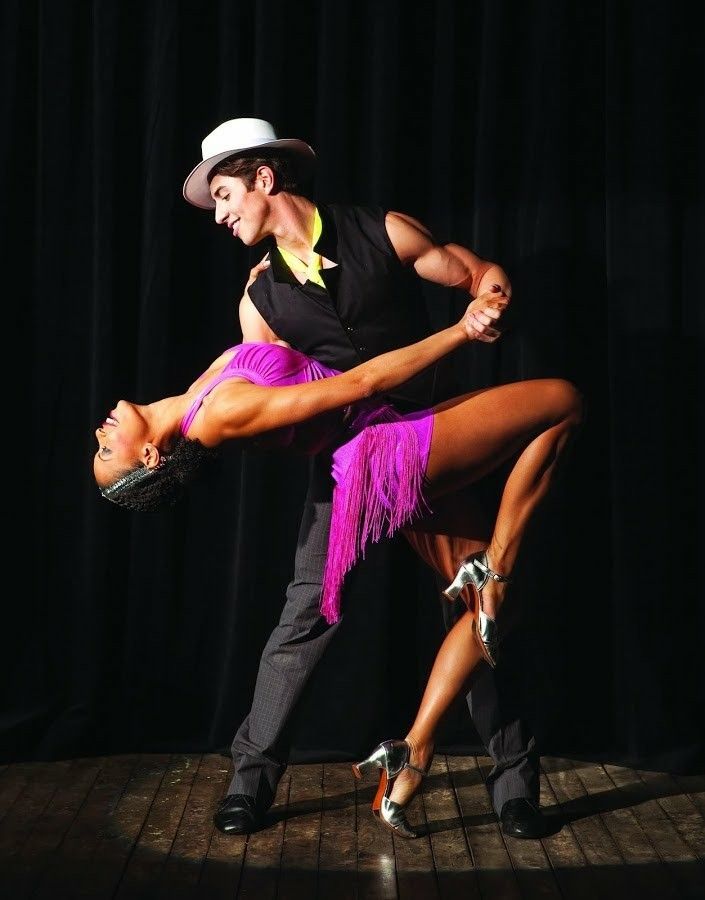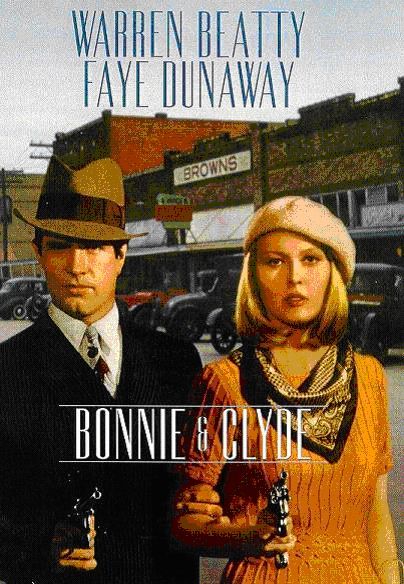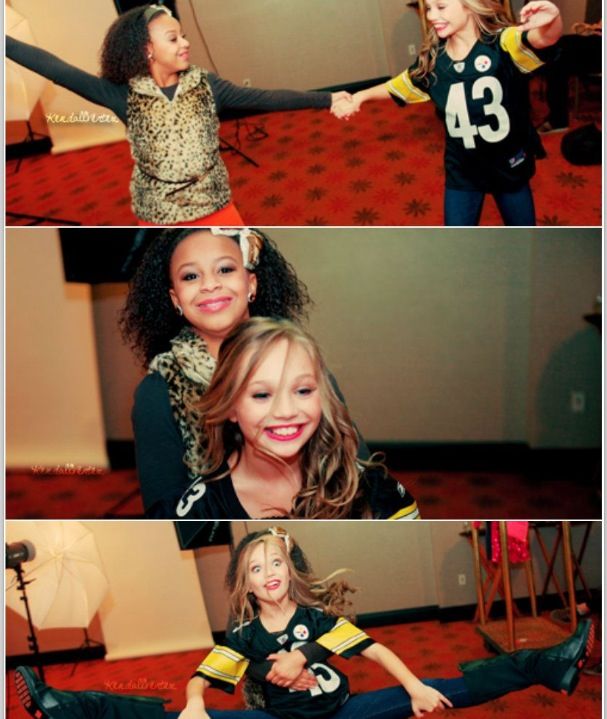How to dance the continental
Continental Waltz - SKATE DANCE DIAGRAMS AND TOOLS
My sub-title, here in italics, is a line from the song ‘The Continental’ in the 1934 frothy, romantic, dance movie The Gay Divorcee with Ginger Rogers and Fred Astaire. The movie is not about what you might think—1934 was long ago, and a much simpler age. However, those of you having to deal with the Continental Waltz seriously—perhaps preparing for a proficiency test—will know the dance is indeed subtle in its difficulty, and it only “does what you want it to do,’ if you understand the dance, and your skating proficiency is up to the job that understanding requires.
I will try to tell you about the problems that the dance poses you may not have thought about, so if it all goes disastrously wrong you will know why. After that, I want to talk about the Continental’s kid brother, the Spread Eagle Waltz Style A. That dance is excellent preparation for the Continental. Then I will suggest some ways to improve your footwork specifically for the Continental, and thus be able to put this dance on the rink floor and pass your test.
The Continental Waltz and the Drop Three Continental Waltz date officially from the beginning of the last century. But I believe they were skated long before then as free dances. They are the skating versions of natural dance moves we associate with champagne, men in frock coats and white scarves whirling around and around with elegant ladies in ball gowns to Strauss waltzes played by live string orchestras. You may think of the Drop-3 as merely a variation of the Continental, but it is so different in mood and proficiency requirements, it is best treated separately, not here.
When I took my silver medal, I had the choice of skating the Continental or the International Waltz. Everyone else taking the test opted for the International. I would not be caught dead doing the International. That dance is a total bore and lacks any artistry. It is just a dumbed-down rip-off of the Continental for the straightaway with an Imperial Waltz corner. It wasn’t composed; it was designed by a committee--literally.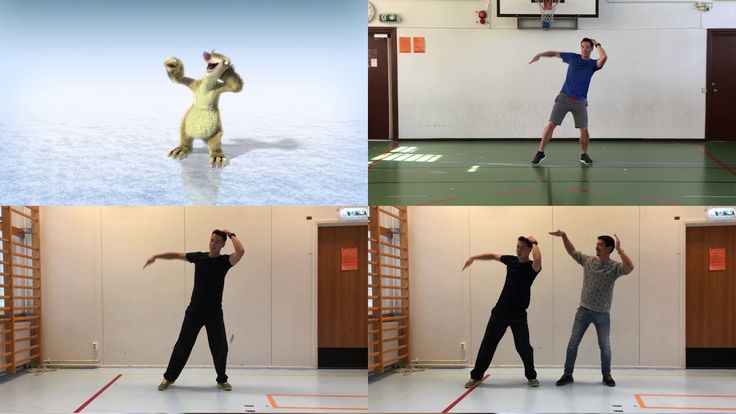 Give me a break! If I had chosen to do the International, I would be surrendering any integrity and self- respect I have. “Aren’t you taking this a bit too seriously?” I hear you ask. Not in my skating world.
Give me a break! If I had chosen to do the International, I would be surrendering any integrity and self- respect I have. “Aren’t you taking this a bit too seriously?” I hear you ask. Not in my skating world.
I was told later by my dance pro (who was my partner for the test) that a judge had approached her before I skated to ask, “Is he really sure he wants to do the Continental?” She told him, “I don’t know how he does it, but he can stay on pattern.” I tell you this not to pat myself on the back--although, since I knew I could do it, and they couldn’t, I did want to show off. My secret was that at the centre of my skating soul I was a school-figure skater. I knew what the proficiency problems in the Continental were, and how to overcome them. I will talk about these problems as they affect the Continental in detail.
First, I want to mention a problem that has nothing to do with proficiency, but you do have to solve: practicing this dance when many other skaters are on the floor. Basically, you are in the same position as a bat from the northern hemisphere (where bats whirl out of their caves at sunset flying counterclockwise), unexpectedly taken to a cave in the southern hemisphere (where bats fly out clockwise). What is the poor bat supposed to do? This is the situation you face when you try to practice the Continental during public sessions—specifically the inner lobe. And that inner lobe is the major part of the difficulties with this dance. Even before you worry about skating the steps of the lobe successfully, you must cut directly across traffic, across the floor inside the black line almost to, or even over, the black line on the far side of the rink, and into oncoming traffic. Thus, few chances to practice the Continental. I will talk about possible solutions to this problem too.
Basically, you are in the same position as a bat from the northern hemisphere (where bats whirl out of their caves at sunset flying counterclockwise), unexpectedly taken to a cave in the southern hemisphere (where bats fly out clockwise). What is the poor bat supposed to do? This is the situation you face when you try to practice the Continental during public sessions—specifically the inner lobe. And that inner lobe is the major part of the difficulties with this dance. Even before you worry about skating the steps of the lobe successfully, you must cut directly across traffic, across the floor inside the black line almost to, or even over, the black line on the far side of the rink, and into oncoming traffic. Thus, few chances to practice the Continental. I will talk about possible solutions to this problem too.
The basic problem with the Continental is staying on pattern. That problem, in turn, depends on two things: 1) how well you can do a 3-turn with a long tail on a tight circle, and 2) how well you can rotate.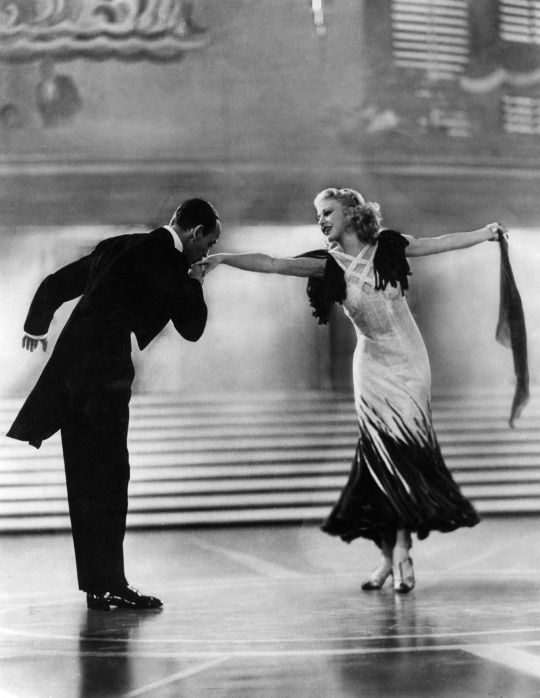 When you are practicing the dance alone, you will worry most about the 3-turn. When you skate it with your partner, you will realize that rotation is the real problem. The two problems interact, and both must be solved to stay on pattern.
When you are practicing the dance alone, you will worry most about the 3-turn. When you skate it with your partner, you will realize that rotation is the real problem. The two problems interact, and both must be solved to stay on pattern.
The natural tendency when doing 3-turns is to skate the tail of the turn shallower than the first part. A shallow tail takes you off the arc of the lobe you are supposed to be skating. In most dances, a 3 is done at the end of the edge, so you don’t notice. In the Continental, you definitely do notice, because you have three beats of music to wonder what’s happening. When you are practicing it alone, this problem is bad enough. When you are with a partner, it means that you pull out and away from him/her—whose outer back edge should be keeping you both on pattern. The problem gets even worse if the difference in weight--mass, for you physicists—between the partners is great. Man usually has more mass, so he has the main responsibility to do his 3 correctly to stay on pattern.
3-turns with long tails are unusual in the dance canon. Aside from the Continental, I can only think of the Harris T, Iceland T, Carroll T, and Lady’s ROF-3 in the Tango Barn Dance. But, in those dances the 3s are either IF-OB 3s, and/or are not in A position. That tendency to a shallow tail is more pronounced in OF-IB 3s. More importantly, when they are done in F or Rev F positions, the skaters are not tracking. When partners are in A, suddenly it matters, and the big problem is rotation.
Rotation in skating is what you call the phenomenon of the partners rotating around each other. It's rather like earth and moon rotating around each other as they make their way around the sun. Perhaps the earth and moon are not a good example—unless one partner is a small child or severely anorexic. A better example would be a binary star system where the two stars are more equal in mass. You physicists and astronomers will want to remind me the moon does not revolve around the geographic centre of the earth, but some 4,624 km/2,873 miles out from the earth’s centre.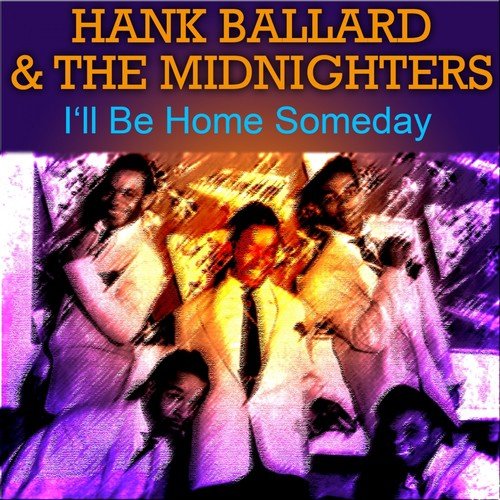 Calm down. I've got that. We are trying to pass a proficiency test, not fly to Mars.
Calm down. I've got that. We are trying to pass a proficiency test, not fly to Mars.
If you haven’t thought about rotation, this may be the time to start. You first dealt with rotation when you learned the Collegiate. Back then you were probably worrying about doing your mohawk right and not tripping your partner. When you do the Collegiate corner right, it looks like one long, slow, rotation around and around a common centre. It's slow, stately, continuous—no jerking around—and it’s beautiful. Remember that anytime, and in any dance, when you are in A position and rotating, your shoulders are matching your partner’s, AND they are constantly moving. So they are in the Continental, except you are doing 3s not mohawks. You are skating around a smaller circle (lobe), and you are skating faster.
Assuming you can deal with longtail 3s, and can actually rotate smoothly around your partner rather than doing a push-pull-you're trailing-suddenly-you’re-leading farce, your last problem is putting your pattern on the floor. Theoretically, all three lobes—two outer lobes, one inner lobe—should present the same degree of difficulty to stay on pattern. They don’t. Your first outer lobe as you come out of the inner lobe is the easiest. You stay on pattern because if you don’t you will crash into the corner wall.
Theoretically, all three lobes—two outer lobes, one inner lobe—should present the same degree of difficulty to stay on pattern. They don’t. Your first outer lobe as you come out of the inner lobe is the easiest. You stay on pattern because if you don’t you will crash into the corner wall.
The second corner lobe is a bit harder because you have to set yourself up to cross your baseline at at least a 90-degree angle. With the inner lobe you are in real danger. You are in the middle of the floor, no wall to remind you to keep your lobe tight. And that lobe is the reason no one else wanted to do the Continental the night I took my test.
So far, I have only been telling you about problems. I have said little about how to solve them. Hang on; I'll get there. But first I want to introduce you to the Spread Eagle Waltz Style A. It is an excellent case study of rotation, and the same principles that apply to it apply to the Continental.
The Spread Eagle is fun to skate, and a lot more interesting than the Chase or Flirtation for slow waltz music.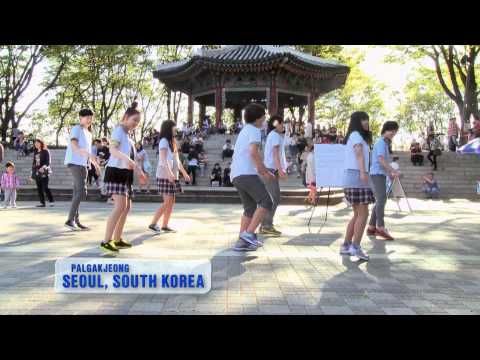 Also, it is your only chance to do a spread-eagle in a dance. It was banished from the test schedule in 1950 along with all dances having steps with two feet on the floor at the same time. The official reason given at the time for the Spread Eagle Waltz was fear that young skaters were showing signs of knees growing out of alignment and turning outward. I didn’t believe that then, and still don’t. Ballet dancers don’t have this problem, and even if they did, do you think young skaters were doing spread-eagles so much it affected their bone growth? The real reason the Spread Eagle and all the other two-feet-on-floor dances, were dropped was a wave of footwork puritanism that swept over the roller skating world at that time. I remember being surprised, and gladdened, when the Paso Doble appeared a few years later, and two-feet-on-floor made a comeback.
Also, it is your only chance to do a spread-eagle in a dance. It was banished from the test schedule in 1950 along with all dances having steps with two feet on the floor at the same time. The official reason given at the time for the Spread Eagle Waltz was fear that young skaters were showing signs of knees growing out of alignment and turning outward. I didn’t believe that then, and still don’t. Ballet dancers don’t have this problem, and even if they did, do you think young skaters were doing spread-eagles so much it affected their bone growth? The real reason the Spread Eagle and all the other two-feet-on-floor dances, were dropped was a wave of footwork puritanism that swept over the roller skating world at that time. I remember being surprised, and gladdened, when the Paso Doble appeared a few years later, and two-feet-on-floor made a comeback.
Look at the diagram of the Spread Eagle Style A now. Don't bother with the notes. Just get a general idea of the dance from the diagram. SPREAD EAGLE Waltz diagram. The 1948 edition of Roller Skate Dancing is the clearest. You will see it is basically the Continental except that spread-eagles replace 3s, Man skates backward most of the time, and there are no swings. In the Spread Eagle everything is slower with no distractions like shallow-tail 3s to worry about.
SPREAD EAGLE Waltz diagram. The 1948 edition of Roller Skate Dancing is the clearest. You will see it is basically the Continental except that spread-eagles replace 3s, Man skates backward most of the time, and there are no swings. In the Spread Eagle everything is slower with no distractions like shallow-tail 3s to worry about.
I want to focus on the inner lobe, from Man’s point of view. Of course, the same issues apply to Lady, and in the outer lobes to both, just on the other foot. As Man begins his inner lobe, both are tracking. He strokes his LOB. Then he begins to rotate his shoulders so that by the end of the step his right shoulder is pointing into line of travel. At the same time, with his left hand, he firmly pushes against Lady’s extended right hand, helping her move out around him to the front. By the end of Man’s LOB, Lady has moved from trailing to alongside him. Man's shoulders continue to rotate so that as he strokes his ROF and Lady her LIF-RIB spread-eagle they begin to move back into tracking, Lady ahead. By the time Man finishes his ROF and Lady her LOB, they are tracking again. They had better be tracking, because with that ROF Man is beginning his spread-eagle sequence to rotate around Lady. With the final step of the lobe, Man’s LOB, Lady’s ROF, they are again tracking and preparing for the next lobe. The entire lobe is one long, continuous rotation—rotation of shoulders and of skaters rotating around each other. What it should not look like is Man suddenly swinging Lady around in front of him at the last moment.
By the time Man finishes his ROF and Lady her LOB, they are tracking again. They had better be tracking, because with that ROF Man is beginning his spread-eagle sequence to rotate around Lady. With the final step of the lobe, Man’s LOB, Lady’s ROF, they are again tracking and preparing for the next lobe. The entire lobe is one long, continuous rotation—rotation of shoulders and of skaters rotating around each other. What it should not look like is Man suddenly swinging Lady around in front of him at the last moment.
During All Skate you can practice this rotation of the outer lobe, and during Reverse Skate the inner lobe. But, your skill at rotation will only be tested when you can do them on smaller and tighter circles/lobes.
How to do the spread eagle: Again, the inner lobe. You are doing the ROF. As you stroke the next step, the LIF, your right skate does not leave the floor. Instead, as the LIF passes the ROF, lift your right rear wheels and rotate your skate so your right heel follows your left heel—something like doing a 3-turn.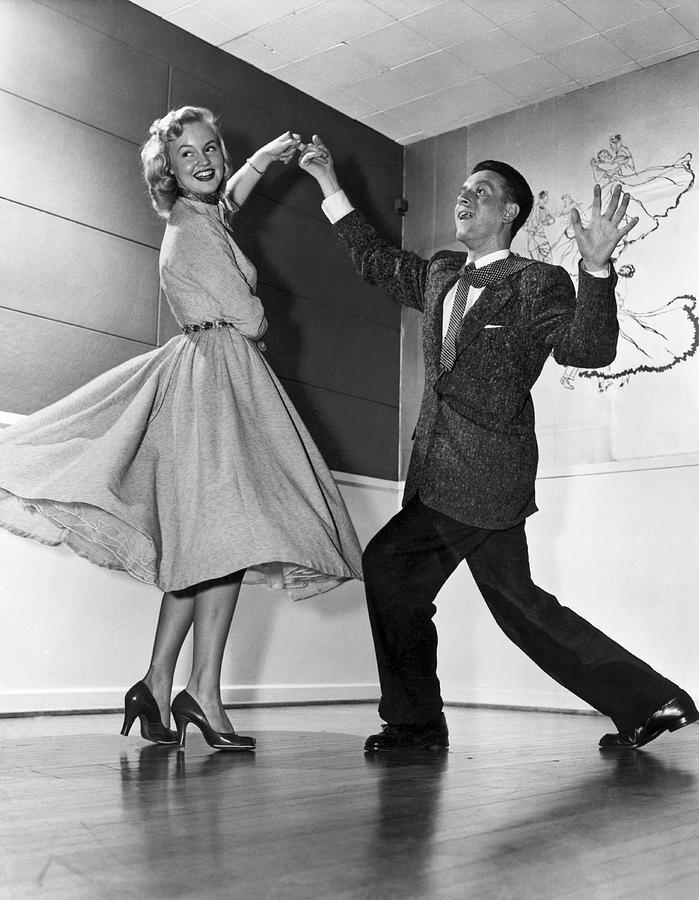 Milliseconds after you stroke the LIF, both your skates are fully on the floor, heel-to-heel, touching.
Milliseconds after you stroke the LIF, both your skates are fully on the floor, heel-to-heel, touching.
Since you are doing spread-eagles, not 3s, all you really have to worry about in the dance is the rotation. With spread-eagles you easily lean forward into the circle, not pull away as you might in the 3-turn in the Continental.
Back to the Continental. The thoughtful amongst you will have realized that the problems I have described so far are the same as you face in all dances done in A position. So, any work you expend on the Continental (or the Style A) will show up in your dance proficiency everywhere.
There comes the question, “Is there some way to prepare for the Continental, a way that packs as much real proficiency learning into as small a package as possible--the most bang for the buck?” This last part because your opportunities to skate the Continental during public skating are limited. Yes, there is, but it may make you uneasy. It involves two school figures, and then, if you are brave, a dance you would never consider trying once you saw the diagram—the Three Lobe Eight Continental Waltz. But come on, at least hear me out.
But come on, at least hear me out.
If you are new to school figures you might want to check out my forthcoming essay ‘WHAT SCHOOL FIGURES ARE REALLY ALL ABOUT: It’s not just skating around in circles.’ in the Artistic Skating department on this website. It’s not too long, and I try to look at the essence of that part of serious skating. I do not go through individual figures in detail. Once you know what the point of school figures is, you do that part yourself. There is no “official” way to do a figure, beyond starting them and doing any one-foot turns, in the right place. However, try these two figures the way I suggest, because my comments are for doing them to help in the Continental.
To fix the shallow-tail 3s problem, learn to do Figure 7, ROF-3, LOF-3. There is no need to show you a diagram of the figure. It’s on two circles, an 8. Do the 3s on the top of the circle (the long axis). Staying on your circle after the 3 is the point. When you start the edge, your free foot is behind you. As you near the long axis to do the 3, smoothly bring your free foot up alongside your skating foot and turn the 3, then extend your free foot out behind you. To others it will look like one smooth continuous swing from behind line of travel into line of travel. Once you can do the figure on the big circles, do it on the little circles, but at the same speed you used on the big circles. That last part—doing the 3s on the little circles--will expose whether you can really do 3s the way you need to in the Continental.
As you near the long axis to do the 3, smoothly bring your free foot up alongside your skating foot and turn the 3, then extend your free foot out behind you. To others it will look like one smooth continuous swing from behind line of travel into line of travel. Once you can do the figure on the big circles, do it on the little circles, but at the same speed you used on the big circles. That last part—doing the 3s on the little circles--will expose whether you can really do 3s the way you need to in the Continental.
Figure 3, ROB-LOB will straighten out your rotation problem. The idea here is to get you to unlock what the bottom half of your body is doing—preserving a constant trace around a circle—from what the top half of your body is doing—rotating shoulders and hips, and be able to do it automatically.
Your first problem is the start. Formally, it must be started from a dead stop. Getting from a stop directly onto a back edge going fast enough to get entirely around a circle (in advanced figures, two circles) is indeed a problem. See my essay on figure skating for more on this. Or, since you are doing the figure to help you with the Continental, cheat and get a running start—perhaps ROF, LOF3. Practice this figure until your rotation is smooth, continuous, more or less on the circle painted on the floor, AND do the rotation automatically. Then, when you are skating the Continental, pretend you are doing this figure. You don’t have to do this figure on the small circles.
See my essay on figure skating for more on this. Or, since you are doing the figure to help you with the Continental, cheat and get a running start—perhaps ROF, LOF3. Practice this figure until your rotation is smooth, continuous, more or less on the circle painted on the floor, AND do the rotation automatically. Then, when you are skating the Continental, pretend you are doing this figure. You don’t have to do this figure on the small circles.
Now, to put the icing on the cake, learn to do the Three Lobe Eight Continental Waltz. One look at the pattern and you will cry, “Where and when could I possibly do it?!” Sadly, that’s your problem. At Skateland SF I bought a $15 Monthly Card which gave me access to the rink any time there was someone on the premises—from 7:30 am until after midnight every day. There were several hours each day when I had the floor entirely to myself. I had no problem.
This dance is basically a school figure skated to music with a partner. It used to be a compulsory gold dance on ice and with the USARSA, which was a roller skating association closely linked to ice skating. (The USARSA had the vain hope that if they cozied up to the ice world, they could get roller skating into the Olympics.) To practice the Three Lobe Eight CW, three chairs were sometimes put on the ice or floor to mark the centre of the lobes. You don’t need that. Whether knowing this dance is absolutely necessary for you or not, is up to you. But I promise you, if you can do this dance well enough to stay on pattern and look good while you’re doing it, you will have no trouble with the Continental in passing your proficiency test.
(The USARSA had the vain hope that if they cozied up to the ice world, they could get roller skating into the Olympics.) To practice the Three Lobe Eight CW, three chairs were sometimes put on the ice or floor to mark the centre of the lobes. You don’t need that. Whether knowing this dance is absolutely necessary for you or not, is up to you. But I promise you, if you can do this dance well enough to stay on pattern and look good while you’re doing it, you will have no trouble with the Continental in passing your proficiency test.
Let me end this rather exhaustive look at the Continental with this: When I analyze a dance, I am fond of thinking of the dance as an episode of CSI. I then wonder if there is a scene of the crime, a certain sequence of steps in the dance where the main difficulty lurks. Sometimes there isn’t--the Keats Foxtrot is an example. But the Continental does have a scene of the crime, the inner lobe. That is what the judges will be watching most closely.
Next, is there a smoking gun? Is there one step in the Continental that will make or break the dance? Yes, there is. I have been cruelly waiting until now to tell you the secret: Man’s LOB in the middle of the inner lobe. Screw that up, and you fail immediately. Man must consciously lean way back into the circle while holding onto Lady tightly and guiding her around him. He will feel like he is leaning so far he risks hooking the edge. No. The mass of Lady will pull him out as she passes him and he will stay on the arc of the lobe. If Man’s LOB is shallow, they veer wildly off pattern and will not be in position for the swing that ends the lobe and positions the team for the oncoming outer lobe. Trust me on this, guys. Your LOB is Showtime, and in the last analysis it’s up to you, not Lady to make it work!
I have been cruelly waiting until now to tell you the secret: Man’s LOB in the middle of the inner lobe. Screw that up, and you fail immediately. Man must consciously lean way back into the circle while holding onto Lady tightly and guiding her around him. He will feel like he is leaning so far he risks hooking the edge. No. The mass of Lady will pull him out as she passes him and he will stay on the arc of the lobe. If Man’s LOB is shallow, they veer wildly off pattern and will not be in position for the swing that ends the lobe and positions the team for the oncoming outer lobe. Trust me on this, guys. Your LOB is Showtime, and in the last analysis it’s up to you, not Lady to make it work!
When my dance pro, and partner for the test, Frankie Delvecchio (a pro of some fame then) told me what the judge had asked her, I could have told her the secret of staying on pattern, and she could have told all her other students. But I didn’t. They were the usual bitchy, back-biting, conceited low-lifes that can make rink life unpleasant. So, maybe I was selfish back then. That's why I'm telling you the secret of the Continental now.
So, maybe I was selfish back then. That's why I'm telling you the secret of the Continental now.
continental dance orchestra big band 1920s dance music
Skip to contentContinental-Dance-Orchestra-HomeGina MacFarland2021-01-22T17:43:48+00:00
THE CONTINENTAL A variety of big band, swing and jazz classics, along with rock,motown, funk, disco, R&B, pop and beach music for upscale events. DANCE ORCHESTRA with unforgettable music from every era. A Dance Band CDO "All I can say is WOW!…you did a great job of getting our attention when
needed and managed the night beautifully…the band was amazing!" Father & Mother of the Bride With the diversity of many styles of music. A Dance Band That will partner with you to make sure that the entertainment fits the event. CDO The Continental Dance Orchestra!
Featuring Big Band Music and caters to events such as weddings, corporate events, charity fundraisers, society galas, and, debutante balls.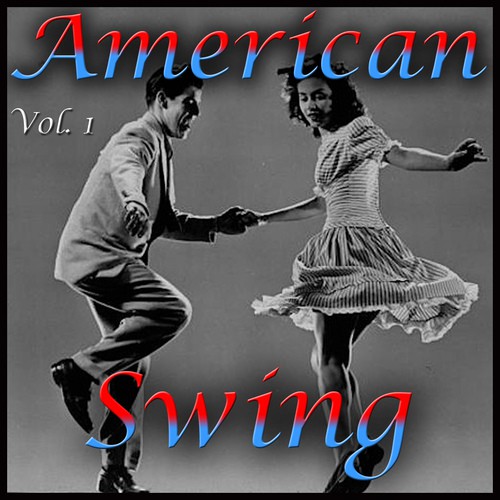
The ensemble has the style and sophistication of a classic 1930s Big Band– but with the ability to play contemporary dance music as well.
With over 300 songs in their repertoire, they can satisfy the variety of tastes in a large audience at any special occasion. Comprised of the South’s most accomplished players, The Continental Dance Orchestra collectively has a breadth of musical experience unsurpassed by any other regional band. They move easily from jazz, swing and bebop to Top 40, classic rock and Motown, and the band can adjust their clothing and song selection to enhance your event’s theme.
The glamorous torch singer fronting the orchestra is Gwen Hughes. Called “an Atlanta institution” by the Georgia Heritage Music Hall, she has been a bandleader for more than 15 years. Her longstanding relationships with dozens of event planners across the United States and Europe attest to her careful attention to clients’ needs. As the Inn at Biltmore Estates (Asheville, N.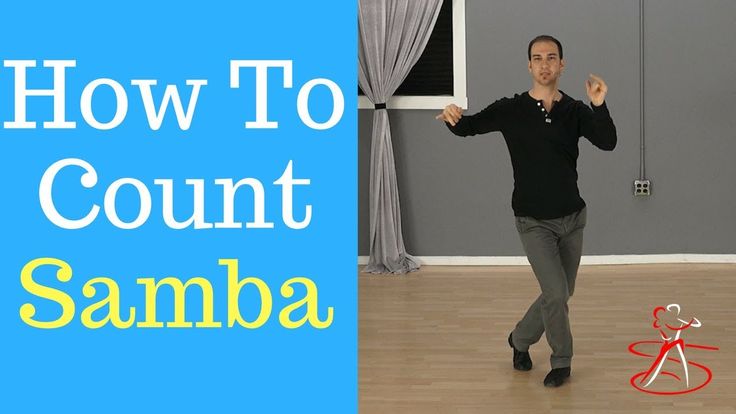 C.) said, “Gwen and her band were fantastic. Music was great, and more importantly, they are true professionals.”
C.) said, “Gwen and her band were fantastic. Music was great, and more importantly, they are true professionals.”
SPOTIFY
PANDORA
Thank you to you and your friends for being the most incredible music we have heard at the Ball in a long time!
C.M. Shutt, LT, SC, U.S. Navy
I’m so excited that we have found you. Thank you for being so easy to work with. I hope to have you back for many more.
Kate Little, Soiree (Charleston, SC)
After providing music for the ceremony, you kept the party rocking in just the right way
Phebe, Mother of the Bride (Orange Beach, AL)
I would be honored to tell another “bride to be” what a great choice they would make in hiring you and your band.
Becky, (Bride)
…Never seen the dance floor used as much as it was that night.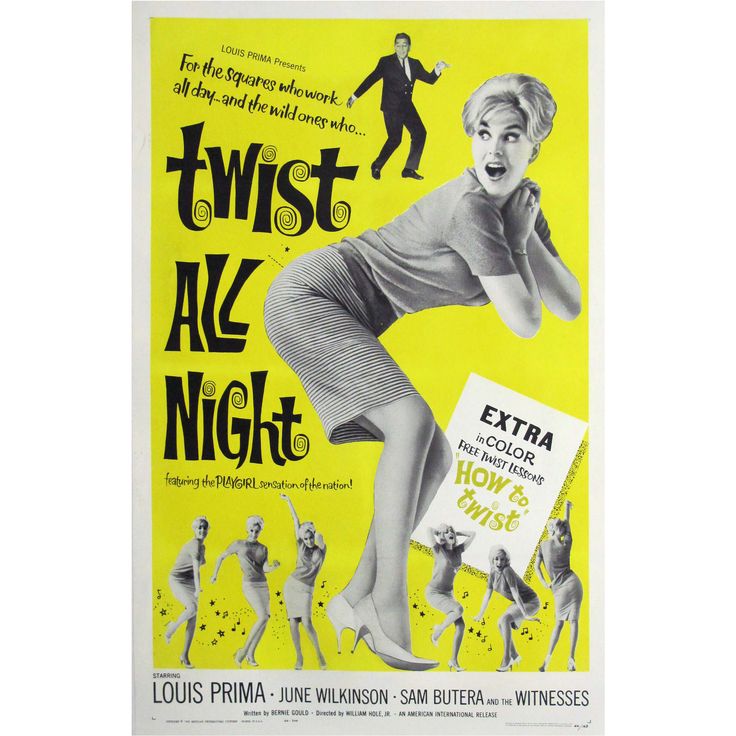
Cyndi, Event Planner (The Roswell Mill)
The positive comments about your music never stopped. Returning patrons said the “best year yet!
Joe Schenkenfelder, Cumberland Valley National Bank (London, KY)
Many, many folks told us they have never had so much fun at a wedding, and we know that this is because of you guys…thanks for learning “A Taste of Honey—“ Herb Alpert never played it so well!.
Shari and Jeff, Mother and Father of the Bride (Memphis, TN)
All I can say is WOW!…you did a great job of getting our attention when needed and managed the night beautifully…the band was amazing!
Jacques and Dana, Father and Mother of the Bride (Atlanta, GA)
We had a very successful event with everyone complimenting us on our orchestra. Gwen did a great job with her 14-piece group and kept us on the dance floor until midnight.We had several conversations with her beforehand so she knew the crowd she would be playing to and the music we requested
Vincent, Sterne Agee (Savannah, GA)
Great report on Gwen Hughes and her orchestra…she’s the best!
Steve Harry, East Coast Enertainment
What We Do
Band Configuration
Additional Options
Booking The Band
Our Calendar
What We Do
We are experienced, professional entertainers who have played at thousands of events, and we will deliver the appropriate sound and look to make your event a memorable success.
Band Configuration
The basic 6-piece band:
Vocalists, both female & Male
Guitar
Upright & electric bass
Saxophone
Piano
Drums
Or you, the clients, can decide which instruments you want in the band.
To customize the band for your event see the next tab for more options. For a smaller band or combo visit our Kats Band website
Additional Options
Fill this Dynamic Group as you need for your event.
Add a string section for an elegant feel.

Add brass for that bright “Big Band” sound.
Up to 8 more musicians
Any combination of strings and horns.
Booking The Band
The process for booking the band is as follows:
Gwen, the Band Leader, consults with the client (event planner, committee chair, bride, etc.) and tailors the music selection to achieve the desired atmosphere and level of audience engagement.
The band will learn a song or two, if they aren’t already part of our extensive song-list of 300+ titles.
Band members will dress to suit the formality and/or theme of the event.
The Continental Dance Orchestra provides a turnkey music presentation with professional sound system, lighting, and bandstands — at no additional cost.

The typical performance is booked for 4 hours (four 45-minute sets), although contract times can be adjusted to accommodate the needs of an event.
Contact: [email protected] or 770-621-4644.
Music from every era – Played at over 3,500 outstanding events – Dress and song selection to fit your preferences.
Our Calendar
For information on where we will be and to view our calendar schedule, Click Here.
New Years Eve 2019 Moon Glow Sir Duke Mack The Knife Swing Dance Weekend at The Grove Park Inn Kansas City Here I ComeAJC International
Allatoona Yacht Club
Ashley Baber Weddings
The Atlanta Braves
BNP Media
Canoe Restaurant
Capital One
City of Suwanee, GA
Coca Cola Enterprises
Crowne Plaza Grand Opening (Greenville, SC)
Decatur Arts Festival (Decatur, GA)
Defense Research Institute
Delta Airlines
Erica Prewitt, A Big To Do Events
The Georgia Chamber of Commerce
Georgia Department of Economic Development
Georgia Military College
Georgia Production Partnership
Deaton Creek Senior Living
Georgia Tech Swing Dance Association
The Hallmark Senior Living
Health Connect Partners
Intercontinental Hotels Group
Juvenile Diabetes Foundation
Lockheed Martin
Morrow Business and Tourism Association (Morrow, GA)
Nourison Carpets
RaisingRaiders.
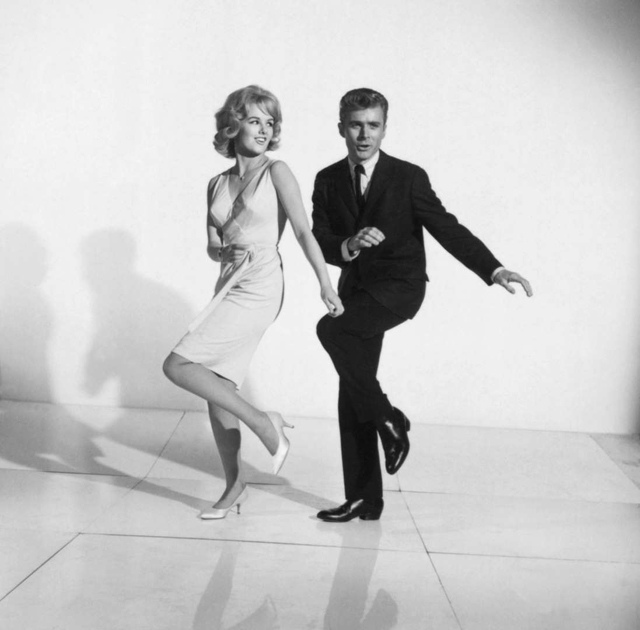 org (Wilmington, NC)
org (Wilmington, NC) Shay Brown Events (Asheville, NC)
Spherion
The Reid House Hotel (Chattanooga, TN)
St. Regis Hotel (Buckhead, Atlanta)
Tarkenton Financial
Turner Classic Movies
United States Navy
The Waterfall Club (Clayton, GA)
Wellstar Foundation
Xerox Corporation
Page load link Go to TopDance School Continental - reviews, photos, prices, telephone and address - Courses - Yekaterinburg
+7 (953) 389-03-... - show
/No reviews
Opens tomorrow at 16:00
Are you the owner?
- Description
-
Easy and aesthetic dance everyone can and at the Continental dance school (ranking on the Zoon.ru portal - 1.7) Everyone is invited to check it out for themselves! Those who practice improve different bundles (movements of arms and legs, body, turns), work on a sense of rhythm, speed and coordination of movements.
In continuing dancers teachers try to develop an understanding of choreography, so that they can deliver the mood of the music and add dramaturgy to the dance.
Contact number: 79533890308.
Dancing school is located at Karelskaya, 53. Working hours: Tue, Thu, Sun: 16:00 - 21:00; by appointment: Tue, Thu, Sun.
Phone
+7 (953) 389-03-... - show
Get directions
By car, on foot or by public transport… show directions
- Opening hours
-
Tue, Thu, Sun: 16:00-21:00
by appointment: Tue, Thu, Sun
- Are you the owner?
-
- Get access
- Get widget
- Report a bug
Similar training centers nearby
Similar courses
Frequently asked Questions about Continental Dance School
- 📍 Where can I find Continental Dance School?
This organization is located at Russia, Yekaterinburg, Karelskaya, 53.
- ☎️ Is the phone number of Continental Dance School available?
Phone number for your calls: +7 (953) 389-03-08.
- 🕖 What schedule does he work with this organization?
Work mode companies: Tue, Thu, Sun: 16:00 - 21:00; by appointment: Tue, Thu, Sun.
- ⭐ Like visitors to this place evaluate its level of service on Zoon.
 ru?
ru? Average rating of the company from Zoon.ru users: 1.7. You can describe your impressions of the Continental Dance School!
- ✔️ How reliable is the information posted on this page?
Zoon.ru tries to post as much as possible Accurate and up-to-date information about establishments. If you see an inaccuracy and/or are the owner this establishment, please use feedback form.
Average score - 1.7 based on 3 ratings
Nat "King" Cole - The Continental lyrics
lyrics A way of dancing that's really ultra new It's very subtle, the Continental Because it does what you want it to do It has a passion, the Continental An invitation to rhythm and romance It's quite a fashion, the Continental Because you tell of your love while you dance Your lips whisper so tenderly Her eyes answer your love Everybody swinging the Continental And you're a-saying just what you're thinking of So keep on dancing the Continental For it's the song of romance and of love You kiss while you're dancing It's Continental, Continental You sing while you're dancing Your voice is gentle and sentimental You'll find before oh the dance is through Oh that you're in love with her and she's in love with you You'll find while you're dancing That there's a rhythm in your heart and soul A certain rhythm that you can't control And you will do the Continental all the time It has a passion, the Continental An invitation to rhythm and romance It's quite a fashion, the Continental Because you tell of your love while you dance Your lips whisper so tenderly Her eyes answer your love Continental, so keep on dancing the Continental For it's the song of romance and of love You'll find before the other Oh the dance is through That you're in love with her and she's in love with you I know you'll find while you're dancing That there's a rhythm in your heart and soul A certain rhythm that you can't control And you will do the Continental all the time While there's a rhythm in your heart and soul A certain rhythm that you can't control And you will do the Continental all the time The Continental, the Continental
Lyrics of the song
It's something daring, continental, a way to dance, it's really ultra new, it's very subtle, continental, because it does what you want, it has passion, a continental invitation to rhythm and romance, it's quite trendy, continental, because you talk about your love while you dance, your lips whisper so softly. Her eyes will answer your love. Everyone is swinging on the continent. And you say what you think. So keep dancing the Continental Because this is a song about love and love. You kiss while you dance It's continental, continental. You sing while you dance Your voice is gentle and sentimental You'll understand before the dance is over. Oh that you're in love with her and she's in love with You, you'll understand while you're dancing That there is rhythm in your heart and soul Which you cannot control. And you'll be doing continental all the time. It's got passion, continental An invitation to rhythm and romance It's quite trendy, continental, 'Cause you talk about your love while you dance Your lips whisper so softly. Her eyes will answer your love. Continental, keep dancing Continental 'Cause this is a song about love and love Which you find before you dance You are in love with her and she is in love with you. I know that while you dance you will understand That there is rhythm in your heart and soul Which you cannot control.
Her eyes will answer your love. Everyone is swinging on the continent. And you say what you think. So keep dancing the Continental Because this is a song about love and love. You kiss while you dance It's continental, continental. You sing while you dance Your voice is gentle and sentimental You'll understand before the dance is over. Oh that you're in love with her and she's in love with You, you'll understand while you're dancing That there is rhythm in your heart and soul Which you cannot control. And you'll be doing continental all the time. It's got passion, continental An invitation to rhythm and romance It's quite trendy, continental, 'Cause you talk about your love while you dance Your lips whisper so softly. Her eyes will answer your love. Continental, keep dancing Continental 'Cause this is a song about love and love Which you find before you dance You are in love with her and she is in love with you. I know that while you dance you will understand That there is rhythm in your heart and soul Which you cannot control.